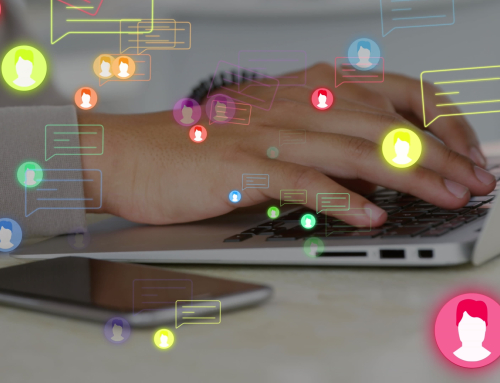Help Desk VS Tech Support: What’s the Difference?
Table of Contents
- What is the Help Desk?
- What is Tech Support?
- Why It’s Important to Have Both
- What Is the Difference Between Service Desk vs Help Desk?
- Does My Company Need a Help Desk, Tech Support, or Both?
- How Do I Run a Successful Help Desk?
- What Is the Best Help Desk Software?
- Additional Frequently Asked Questions
- What Is the Difference Between a Help Desk vsTechnical Support?
- What Is the Difference Between Help Desk vs Desktop Support?
- What Certifications Do You Need for an IT Help Desk?
- What Is 1st, 2nd, and 3rd Line Support?
- Are BPO and Tech Support the Same?
- What are the skills required for technical support?
- What is the future of help desk and technical support?
- Contact Us Today!
Introduction:
In this guide, we’ll explore the important distinctions between a help desk and tech support, exploring why both services are key components of a successful company. Additionally, we’ll show you what it takes to succeed when training or hiring your own help desk or tech support team.
Reading Time: 11 minutes
Key Takeaways:
- Help Desk vs. Tech Support: A help desk is in charge of handling basic IT issues with simple fixes, and will escalate more complex problems to Tech Support. Tech support handles more complex and specialized problems, as well as performing preventative maintenance.
- Why Both Services are Important: Since both services fulfill different roles, having both together allows you to cover all parts of the process.
- Service Desk vs. Help Desk: The key difference between the service desk and the help desk is that the service desk is more concerned with long-term strategic business goals, while the help desk provides tactical support in the moment for user complaints.
- How to Run a Successful Help Desk: To have a successful help desk, it’s important to prioritize the needs of the end-user by providing them with easy-to-use tools that provide successful and scalable solutions.
What is the Help Desk?
Help desks are designed to be able to resolve basic questions and concerns. For example, relatively simple IT problems such as password resets, application support, software updates, or server backups can all be resolved via a help desk. In addition, many help desk support problems are able to be resolved via a remote desktop or over the phone.

What is Tech Support?
Problems that cannot be handled by the help desk are typically passed up the chain of command to the tech support call center. While working the help desk requires little to no knowledge of technology, tech support requires extensive knowledge. Truly the backbone of the office support team, tech support tends to have more variety in their job, handling different issues every day, depending on the needs demonstrated within the office.
Within an organization, these differences may tend to cross over in many ways. However, it’s important to understand what each provides and to use the proper term for your services.
Why It’s Important to Have Both
Having both a help desk and tech support available in your business is a simple way to keep things running efficiently. Both services play an important role in keeping your business running smoothly, and while those roles might appear similar from the outside in, both are necessary steps in the larger process of solving the variety of technical problems that crop up in any organization past a certain size.
Let’s look at a few reasons why help desks and technical support are not mutually exclusive — nor should they be.
Importance of Help Desk
The help desk is an essential first line of defense for an organization’s technical problems. In ideal circumstances, any technical problems that an individual employee can’t solve on their own should come here first. Once an issue is brought to the help desk’s attention, the Help Desk Technician can then help troubleshoot some of the more common or basic problems and start the initial ticketing and documentation process. Then, if the problem reaches a certain level of complexity, the Technician can escalate the ticket to technical support.
This process acts as a filter, catching the easier fixes early on so that technical support doesn’t become overwhelmed by the sheer volume of basic questions, pulling their focus away from the more complex and specialized problems that they are equipped to handle.
Importance of Technical Support
The value of good tech support lies in its specialization and ability to concentrate on both preventative care and on larger, more resource-intensive problems. Where the help desk is more reactive in nature — offering solutions to existing problems — tech support is able to be more of a proactive solution for many problems, updating software, and preventing problems from occurring in the first place. Doing this proactive work keeps an organization’s devices, networks, and processes running smoothly, resulting in fewer tickets overall, and allowing more efficient management of resources.
What Is the Difference Between Service Desk vs Help Desk?

With the roles of technical support and help desk thoroughly disentangled, let’s shift our focus to how a help desk differs from a similarly named role, the service desk. Though a layman might use both terms interchangeably, there are some notable differences.
Goals
The objectives of a service desk are focused on aligning the company’s IT services with its overall business goals. A service desk also aims to work more preventatively, improving the service’s quality and consistency so that the whole system works efficiently.
A help desk, on the other hand, has more of a focus on immediate support, treating the symptoms of a user complaint in the meantime before a long-term solution or systemic fix can be implemented.
Style of Customer Service
The help desk is more likely to work directly with a customer or user. This is because they are usually the first point of contact for technical complaints, handling several types of customer interactions like resetting passwords, installing new software, and troubleshooting a problem with connectivity.
The service desk will usually interact with a user preemptively by maintaining both hardware and software and managing proper software and network configurations. When not providing preventative care, the service desk will also handle many of the complex elevated tickets that benefit from their specific expertise.
Approach to Problem-Solving
The service desk’s origins were based on the underlying concept of “managing IT as a service.” A service desk typically manages incidents and service requests, directly with the users. A service desk views problems through a lens that is comprehensive and strategic, addressing the broader scope of a business’s challenges and what steps can be taken to strengthen the company’s technology and infrastructure in the long run.
Meanwhile, a help desk is more targeted and tactical in nature, focusing on fixing what is broken, troubleshooting immediate concerns, and escalating bigger problems to specialists. A help desk has always been more focused on fixing what is broken.
Within an organization, these differences may tend to cross over in many ways. However, it’s important to understand what each provides and to use the proper term for your services.
Does My Company Need a Help Desk, Tech Support, or Both?
While most companies have both help desks and tech support, it can often be helpful to determine which is a higher priority for your organization. The decision to implement a help desk vs technical support, or a combination of the two services will depend heavily on the type of products and services you offer to your customers.
For instance, if the bulk of your customers’ technical problems are easy fixes and your product or service is fairly simple from a technical standpoint, then a help desk might be prioritized. On the opposite extreme, if you find that customers are routinely asking for help with problems that require a high level of knowledge and expertise to handle, then technical support should be higher on your list.
However, in most situations, the technical complexity of a company’s products and services falls somewhere between those two extremes. Whenever that’s the case, both the help desk and tech support teams can work together, dividing the workload and ensuring that everyone can focus on their core specialties, creating an excellent customer experience.
How Do I Run a Successful Help Desk?

Running a successful help desk doesn’t necessarily entail a big budget or complicated processes. What it boils down to is delivering on your client’s needs and offering stellar service along the way.
Here are a few tips:
- Put the end-user’s needs first. Ensure technology is configured with them in mind and take a proactive approach to service delivery. Pre-empt their needs, communicate freely, and listen! Continually learn and improve.
- Provide simple, useful tools. However, tread carefully when offering self-service. Recurring problems are great for utilizing self-service tools but escalated and complicated problems need a professional touch.
- Deploy scalable, fit-for-purpose technology. As your help desk grows, it may be time to evolve your software for a wide range of capabilities, including remote or global use. This helps to get the job done while still hitting performance targets.
Ready to outsource your help desk support to the professionals?
What Is the Best Help Desk Software?
If you already have your own in-house help desk, updated software may be a great solution to providing the best possible support to your customers.
While sifting through the options may seem daunting, you can quickly filter out the useless and find the best when you base your search on the following seven criteria:
- The type of support your customers expect and the experience you want to give your customers (multiple channels, self-support, etc.)
- The needs of your support team (maximize productivity)
- Essential and non-essential features (focus first on core requirements)
- Scalability (limit future investment needs)
- Reporting options (consider which metrics you use and why)
- Test and trial (do this from both the support side as well as the customer side)
- Reliability and support (during integration as well as down the road)
Ready to take your business to the next level? Let our call center experts show you how we've helped organizations just like yours seamlessly scale while lowering costs and increasing efficiencies.
You won't regret it.
Additional Frequently Asked Questions
What Is the Difference Between a Help Desk vsTechnical Support?
The terms “help desk” and “technical support” are often used interchangeably when it comes to customer service. So what’s the difference? Or are they the same?
Most commonly, a help desk is a contact point for customers who have questions or need help with general tasks, such as late shipping or placing an order.
In contrast, technical support is for customers who require specific help with technical problems, which are usually more time-consuming and complicated than general help desk inquiries. These issues might include faulty products or website navigation questions.
While many companies have a help desk, technical support teams are usually reserved for tech or SaaS companies.
What Is the Difference Between Help Desk vs Desktop Support?
Desktop support is one type of technical support, while help desk support is closely related to general customer service. These two types of support differ in their goals, approaches to listening to customers, and perspectives.
A desktop support team is made up of specialized technicians who directly access a phone, computer, tablet, or other device in order to resolve issues. This type of support usually relies on virtual chat or a phone call to communicate with the customer while working through the problem.
Many offices provide desktop support internally, especially when they need to monitor or manage networks. Most employees use the same hardware and software within the office, making desktop support much easier to provide.
On the other hand, help desk support usually encompasses customer support solutions for a wide range of questions. For example, customer service questions about store hours, order fulfillment, returns and refunds and so on can all be serviced by a help desk as well.
What Certifications Do You Need for an IT Help Desk?
Though some help desks serve a more general customer service function, an IT help desk is more similar to a technical support desk, working to keep systems and software running properly for customers or organizations. These technicians spend their day diagnosing computer problems, troubleshooting software, restoring or backing up data, and more.
So what certifications do you need for an IT help desk job? The exact certifications may differ depending on the specific job description, but here are some of the most common certifications to consider if you’re interested in working at an IT help desk:
- CompTIA A+
- CompTIA Network+
- Microsoft MCSA: Windows
- Microsoft MCSE: Desktop Infrastructure
- Cisco Certified Network Associate (CCNA)
What Is 1st, 2nd, and 3rd Line Support?
Technical support service is divided into three tiers, or “lines,” known as 1st, 2nd, and 3rd line support. Here’s what you should know about each line of support:
- 1st Line Support: Help desks that are usually based on phone or internet communication.
- 2nd Line Support: Onsite support team members that carry job titles including IT Technician or Desktop Support Analyst.
- 3rd Line Support: Another tier of onsite support, usually reserved for those who carry job titles like Network Specialist or Server Engineer.
Are BPO and Tech Support the Same?
BPO and tech support have some overlapping qualities, but they are not the same. BPO stands for “business process outsourcing,” a term for when a company hires a third party to handle some aspect of the business.
Technical support is a type of customer or internal support to help customers or employees resolve issues with their software, hardware, or technical devices.
What are the skills required for technical support?
When hiring a technical support team (or further developing your current team’s skills), it’s important to cultivate an extensive repertoire of technical knowledge, particularly in relation to your own products and services, with diverse expertise in networks, operating systems, documentation, and general troubleshooting skills.
A good technical support team, in addition to their technical know-how, should also have a variety of useful soft skills, like problem-solving, time management, and customer service.
What is the future of help desk and technical support?
Help desk and technical support are expected to advance considerably in the next few years. One major advancement expected is a wider spread use of AI chatbots and virtual assistants that handle many of the more common questions, freeing up more time for humans to do the more complex, value-driving work.
With the massive increase in work-from-home situations in recent years, the industry is also expected to see more innovation in providing remote support solutions — everything from remote desktop software to video conferencing, and even guided support experiences in AR or VR.
Contact Us Today!
The actual scope of each position may vary from one workplace to another, but the general idea behind each remains the same. In short, help desks offer support for basic problems and concerns, while tech support requires in-depth training and expertise for more complicated solutions. Now that you understand the difference between the two, it’s time to implement your own help desk and tech support.
Contact ROI CX Solutions today and we can help you identify ways to improve your customer’s need with our dedicated help desk and technical support outsourcing solutions.






